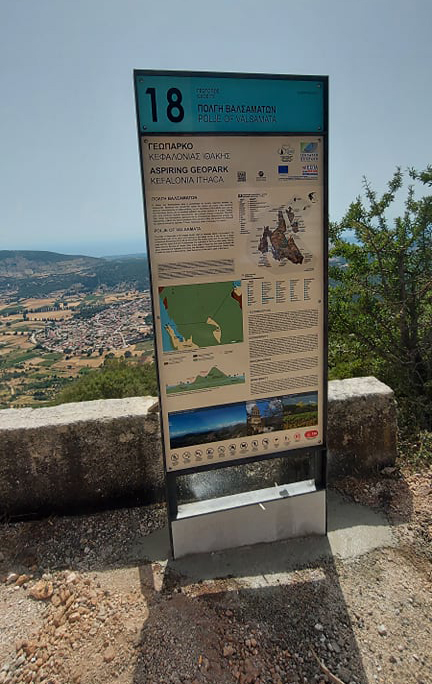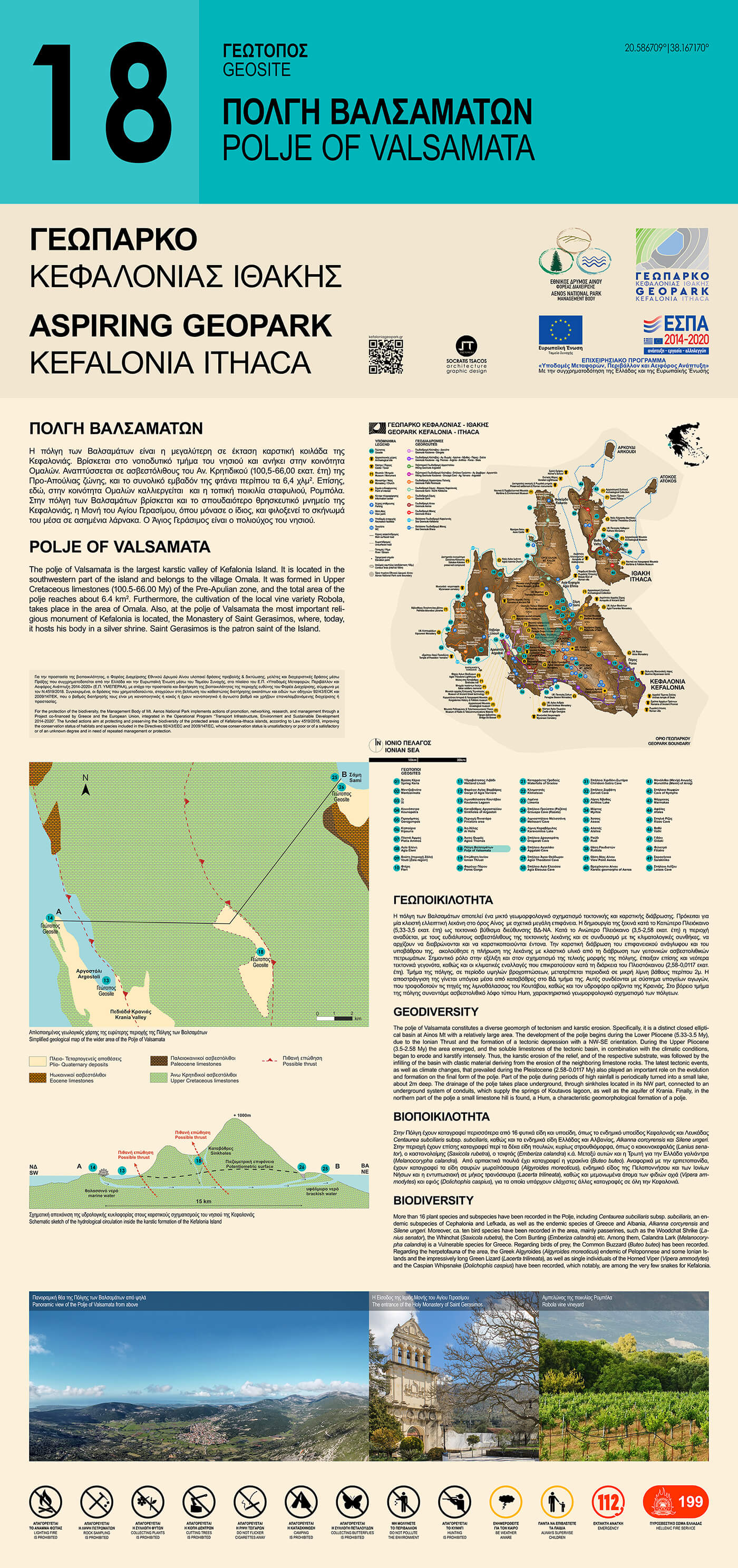The polje of Valsamata (Figure 1) is the largest karstic valley of Kefalonia Island. It is located in the southwestern part of the island and belongs to the village Omala. It was formed in Cretaceous limestones (100.5-66.0 My) of the Pre-Apulian zone (Figure 2). The total area of the polje reaches about 6.4 km2.


Furthermore, the cultivation of the local vine variety Robola (Figure 3), takes place in the area of Omala. Also, at the polje of Valsamata the most important religious monument of Kefalonia is located, the Monastery of Saint Gerasimos (Figure 4), where, today, it hosts his body in a silver shrine. Saint Gerasimos is the patron saint of the Island.


Geodiversity
The polje of Valsamata constitutes a diverse geomorph of tectonism and karstic erosion. Specifically, it is a distinct closed elliptical basin at Aenos Mt with a relatively large area. The development of the polje begins during the Lower Pliocene (5.33-3.5 My), due to the Ionian Thrust and the formation of a tectonic depression with a NW-SΕ orientation. During the Upper Pliocene (3.5-2.58 My) the area emerged, and the soluble limestones of the tectonic basin, in combination with the climatic conditions, began to erode and karstify intensely. Thus, the karstic erosion of the relief, and of the respective substrate, was followed by the infilling of the basin with clastic material deriving from the erosion of the neighboring limestone rocks. The latest tectonic events, as well as climate changes, that prevailed during the Pleistocene (2.58-0.0117 My) also played an important role on the evolution and formation on the final form of the polje. Part of the polje during periods of high rainfall is periodically turned into a small lake, about 2m deep. The drainage of the polje takes place underground, through sinkholes located in its NW part, connected to an underground system of conduits, which supply the springs of Koutavos lagoon, as well as the aquifer of Krania (Figure 5). Finally, in the northern part of the polje a small limestone hill is found, a Hum, a characteristic geomorphological formation of a polje.

Biodiversity
More than 16 plant species and subspecies have been recorded in the Polje, including Centaurea subciliaris subsp. subciliaris, an endemic subspecies of Cephalonia and Lefkada, as well as the endemic species of Greece and Albania, Alkanna corcyrensis and Silene ungeri. Moreover, ca. ten bird species have been recorded in the area, mainly passerines, such as the Woodchat Shrike (Lanius senator), the Whinchat (Saxicola rubetra), the Corn Bunting (Emberiza calandra) etc. Among them, Calandra Lark (Melanocorypha calandra) is a Vulnerable species for Greece. Regarding birds of prey, the Common Buzzard (Buteo buteo) has been recorded. Regarding the herpetofauna of the area, the Greek Algyroides (Algyroides moreoticus) endemic of Peloponnese and some Ionian Islands and the impressively long Green Lizard (Lacerta trilineata), as well as single individuals of the Horned Viper (Vipera ammodytes) and the Caspian Whipsnake (Dolichophis caspius) have been recorded, which notably, are among the very few snakes for Kefalonia.

